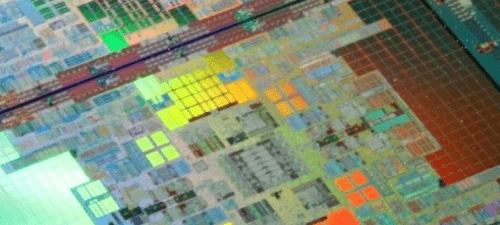HP’s Itanium debacle provides plenty of lessons for anyone who is willing to pay attention. For the past decade, HP has been making a valiant, if extremely misguided, attempt to support the high-end Itanium chip architecture and the HP-UX Unix implementation that runs on it. Oracle’s open letter and drop of documents as part of the companies’ legal battle shows just how much HP has been keeping from customers in order to prop up the good ship Itanic in the face of disinterest even from Intel, which actually makes the Itanium chip! Things are getting ugly.

HP has been trying to make the case that Oracle is acting against customer interests in dropping support for Itanium. Publicly, HP has been accusing Oracle of breaching contract in order to boost sales of SPARC servers.
Won’t Somebody Please Think of the Customers?
No doubt, Oracle is strongly motivated to lure customers away from HP-UX and Itanium to its Sun hardware and Linux or Solaris. But reading through the documents made public by Oracle shows that HP hasn’t been straight with its customers, and its own motivations are less than charitable. Along the way, HP has felt free to spread fear, uncertainty and doubt (FUD) about the Sun/Oracle deal to try to move customers the other way.
Last year, when HP filed suit against Oracle, Oracle claimed that HP had been lying to customers. According to Oracle’s statement, “HP issued numerous public statements in an attempt to mislead and deceive their customers and shareholders into believing that these plans to end-of-life Itanium do not exist. But they do. Intel’s plans to end-of-life Itanium will be revealed in court now that HP has filed this utterly malicious and meritless lawsuit against Oracle.”
In fact, the documents brought forward by Oracle show HP execs in a panic over Intel’s “bombshell” in 2007 (PDF) that it wanted to cancel Poulsen (an Itanium processor scheduled for release in 2012).
In 2009, the documents show, HP was considering buying Sun (PDF) to take over the Solaris “franchise” and deal with the fact that “HP-UX is on a death march due to inevitable Itanium trajectory.” More documents from 2009 discuss the “impending end of life” of Itanium, while HP hoped to keep the “Itanium situation” as “one of our most closely guarded secrets.” (PDF)
To keep Itanium afloat, HP worked out a deal with Intel to pay for the development of Itanium (PDF) and fork over money to ensure that Intel wouldn’t lose money producing Itanium chips. There’s nothing inherently wrong in HP paying Intel to make the Itanium, by the way. Trying to drag other vendors along for the ride, and being dishonest with customers about what was going on, is another story.
An email in March 2011 from Martin Fink, senior VP and GM of HP business critical systems (BCS) (PDF), complained that HP could not say that Intel “at no time communicated to Oracle a change in commitment to the future of the Itanium processor family.” In April 2011, an email from Dong Wei to HP’s Kirk Bresniker said Intel “specifically told them [Huawei] that the Itanium line is at end of life with 2 more generations to go.”
Oracle may be happy to lure customers away from HP-UX and Itanium to Solaris and SPARC (or Linux and x86), but it seems it had plenty of good reasons to abandon the Itanic sooner rather than later.
Lessons Learned
Aside from the corporate drama, what does all this add up to? The short of it is that companies need to be very careful when they’re committing to expensive platforms like HP-UX and Itanium.
All of HP’s bluster about sticking with Itanium for the customers is belied by the fact that the company has gone to great lengths to obscure from customers the dim future for Itanium and how much HP has had to prop up the ailing platform.
Despite obvious signs to the contrary, HP has spent years pushing Itanium and trying to convince customers that the platform has got a long and healthy life ahead of it. Remember that Itanium was supposed to be the next generation for Intel, and there wasn’t supposed to be a 64-bit line for x86 systems. Intel was forced to jump into the 64-bit race with x86 after AMD led the way and demonstrated that, yes, customers wanted to stay on x86.
Red Hat announced it would drop Itanium support in 2009. Microsoft announced the same in 2010. Intel evidently wanted to abandon Itanium back in 2007. Companies that made new or additional investments in Itanium and HP-UX after that should be rethinking their IT practices – and how much they trust what their vendors tell them.
It also, once again, demonstrates why companies should seek commodity and open source systems. Companies that have adopted HP-UX on Itanium have paid a premium for those systems, and now find themselves at a dead end. They’ll get support from Oracle on current products, but will have to deal with expensive migrations (one way or another) when Oracle’s support commitment ends or when they need features in later releases. Meanwhile, customers that chose Xeon-based x86 systems and commodity operating systems are ticking along just fine.










